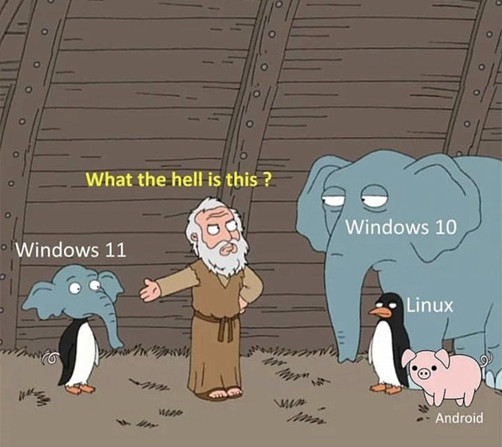[From Unsplash]
Good morning,
As Omicron cases drop, mobility across India is on the rise. We will soon be faced with traffic congestion like we did in the pre-Covid days. So, it makes sense for us to pause and remind ourselves that the traffic jams are systemic problems.
In Focus: The Hidden Driver of Excellence, Daniel Goleman quotes MIT professor John Sterman who specialises in systems theory.
“One of the worst results of system blindness occurs when leaders implement a strategy to solve a problem—but ignore the pertinent system dynamics.
“‘It’s insidious,’ says Sterman. ‘You get short-term relief, and then the problem comes back, often worse than before.’
“Traffic jams? The shortsighted solution means building more and wider roads. The new capacity brings short-term relief in congestion. But because it’s now easier to get around, those very roads mean people, stores, and workplaces spread throughout the region. Traffic over the long term increases until the jams and delays are just as bad as, or worse than, before—the traffic keeps growing until it’s so unpleasant to drive that further growth in trips stops.
“‘Feedback loops regulate congestion,’ says Sterman. ‘Anytime you have more capacity for traffic, people take more car trips, move farther away, buy more cars. As people spread out, mass transit loses viability. You’re trapped.’
“We think we are held up because of that traffic jam, but the jam itself emerges from the dynamics of highway systems. The disconnect between such systems and how we relate to them begins with distortions in our mental models. We blame those other drivers clogging the road but fail to take into account the systems dynamics that put them there.”
Have a great day.
The yogi of NSE
“Who is (or was) the mysterious yogi in the Himalayas advising NSE’s ex-CEO Chitra Ramkrishna on matters of the stock exchange?” Indeed. This is a question playing on the minds of anyone and everyone who has been following the business news over the last few weeks. Santosh Nair makes an attempt to answer who that may be on CNBC-TV18.com.
“First up, Anand Subramanian, the man at the centre of the controversy.” While there are many reasons to believe he could be the yogi, reasons exist to disbelieve them too, Nair points out. Such as, “People who have been privy to his official e-mails say his language skills were not from the top drawer. Also, those who have interacted with Subramanian say his grasp of matters—technical as well as strategic—was not of the highest order.”
Nair’s conversations offer pointers to who this mysterious person could be. But the most intriguing one is the probability that the person “could be some high ranking finance ministry official in the previous administration or even a former finance minister from that era.” However, “ministers and bureaucrats are past masters at covering their tracks. Why would they incriminate themselves by seeking information over e-mail when it could be easily traced back to them?”
What makes the case of the yogi curiouser still, Nair writes, is that “People who have worked with Chitra say she is religious, but nothing seems to suggest that she is superstitious. It is not uncommon for celebrities, politicians and business leaders to have spiritual gurus. In this case, Chitra appears to have been relying on someone whose judgment on professional matters she could trust.”
Dig deeper
Where will micromobility take us?
We are still in the early stages of modern micromobility. What happens after the industry reaches the optimum point? Micromobility analyst Horace Dediu shares a rather radical idea, drawn from our own behaviour with the internet, in his podcast with Azeem Azhar, who runs Exponential View.
Dediu says, “the trigger of the change of the internet was surfing as a concept… When you are surfing, and you’re starting down your trip, do you know where you’ll end up? The whole point of surfing is that you don’t go into the internet in order to seek out a destination, which is what we did initially. With FTP, you had to know your destination. What commerce for the internet quickly became is ‘how do I direct this person to a place where they had no intention of going?’ That’s what advertising is, that’s what clickbait is. That’s what everything to do with the internet has been. It is redirection. The intention of the user is unknown, but the intention needs to be changed if it is known. That is what people are paid for… This is the most controversial aspect of micromobility, is that it enables people to go where they didn’t want to go. It enables the same thing we enabled with the internet… My assumption is, yes, we’ll drive the costs down. We’ll drive emissions down. What happens then is that, ‘Well, as I’m going home, I might go somewhere else on the way there. I might not go most directly home. Because I’m going to be incentivized to go elsewhere.’ That is a very radical thought. And no one believes me yet, actually, they still think it’s too expensive to do this.”
Dig deeper
Software revolution

(Via WhatsApp)
Found anything interesting and noteworthy? Send it to us and we will share it through this newsletter.
And if you missed previous editions of this newsletter, they’re all archived here.
Warm regards,
Team Founding Fuel
(Note: Founding Fuel may earn commissions for purchases made through the Amazon affiliate links in this article.)

